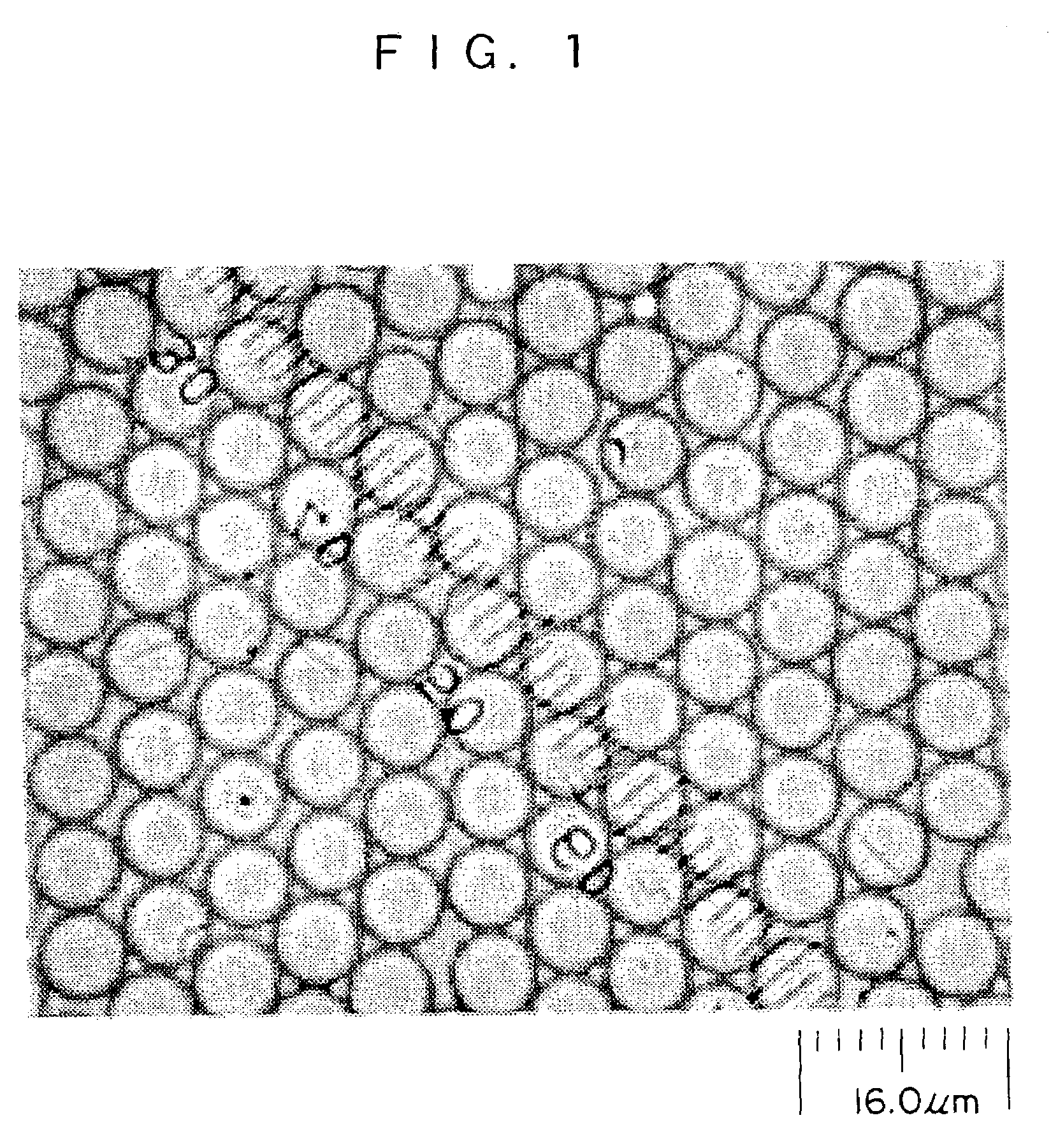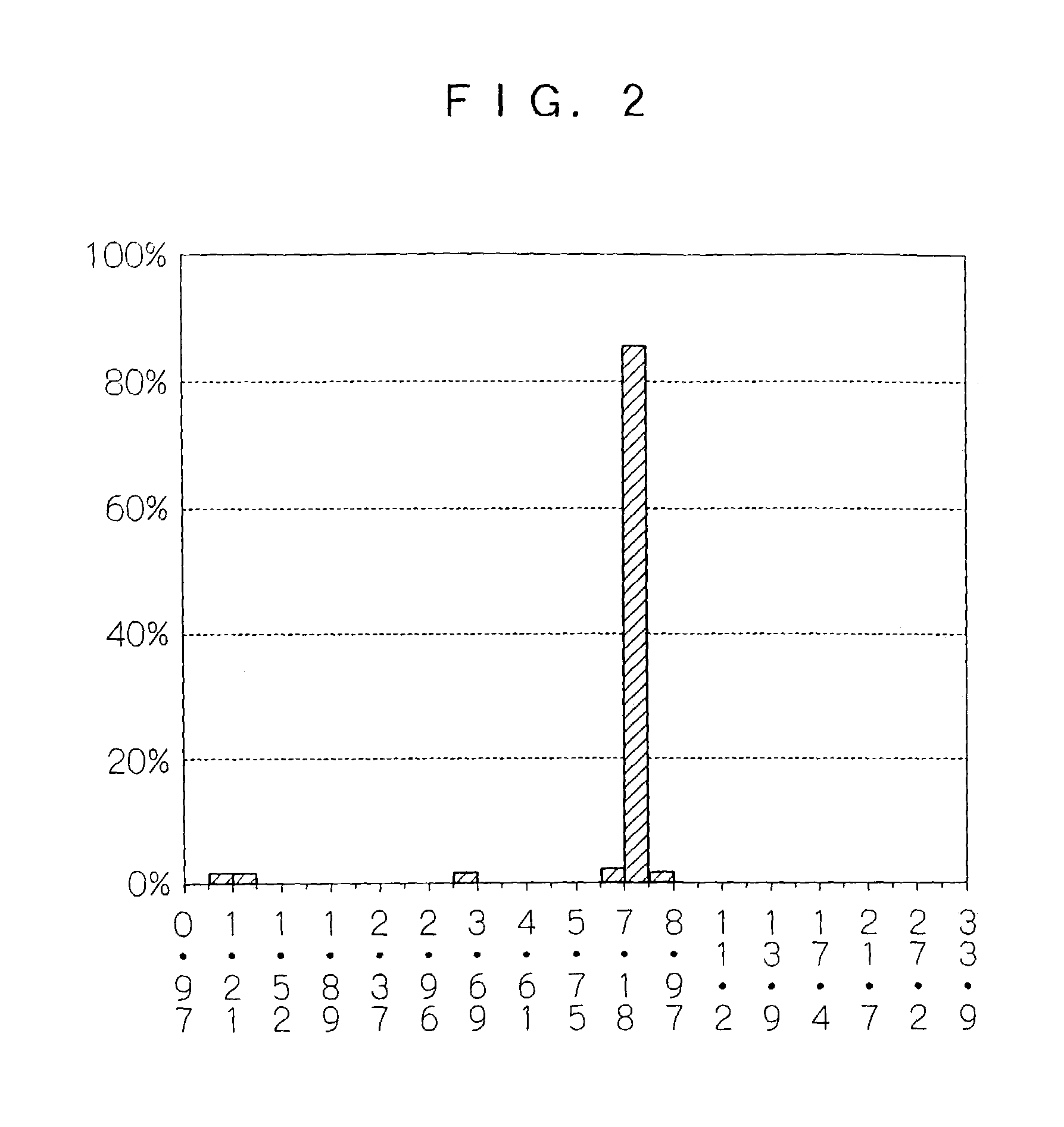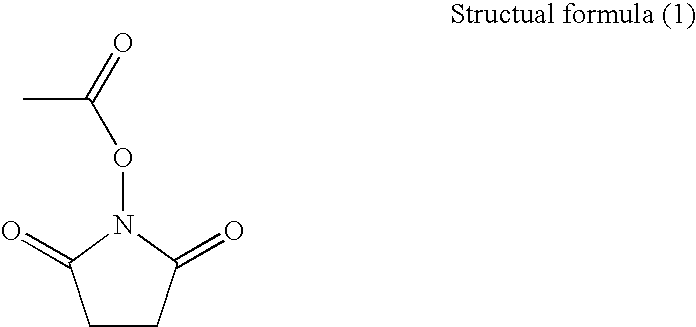Method of producing a non-crosslinked polymer particle
- Summary
- Abstract
- Description
- Claims
- Application Information
AI Technical Summary
Benefits of technology
Problems solved by technology
Method used
Image
Examples
example 1
[0054]As a reaction vessel, a 300-mL separable four-neck flask made of Pyrex glass (registered trade mark) was used, and a cooling pipe having a nitrogen gas release pipe in its upper portion, and a nitrogen gas introducing pipe were provided with the reaction vessel. A stirrer made of iron coated with Teflon (registered trade mark) and an electromagnetic external stirring device were used to perform stirring. The reaction vessel was set inside an oil bath.
[0055]To the reaction vessel purged with nitrogen was added 75 g of a methanol solution in which 2.2% by mass of polyvinyl pyrrolidone (PVP) having a molecular weight (Mw) of 360,000, which is a macromolecular dispersion stabilizer, was dissolved. Next, to the reaction vessel were successively added 21 g (90% by mole) of methyl methacrylate (MMA) purified by vacuum distillation, 4.0 g (10% by mole) of N-acryloxysuccinimide (AS), and 0.25 g of azobisisobutyronitrile (AIBN) as an initiator. Nitrogen gas was blown through the nitroge...
example 2
[0057]Polymer particles were produced in the same way as in Example 1 except that 2.3 g (10% by mole) of N-methacryloxysuccinimide (MS) was used instead of N-acryloxysuccinimide, the amount of azobisisobutyronitrile (AIBN) was changed to 1.3 g, and the reaction temperature was changed to 60° C.
[0058]As a result, polymer particles having a number average particle diameter of 7.8 μm were obtained (yield: 91% by mass). The standard deviation, which is index of the particle size distribution thereof, and the coefficient of variation of the polymer particles were 1.6 μm and 22%, respectively. The result of the composition analysis of the polymer particles by 1H NMR demonstrated that the composition ratio between MMA and MS was 90:10, which was equal to the molar ratio when the raw material was charged.
PUM
| Property | Measurement | Unit |
|---|---|---|
| Temperature | aaaaa | aaaaa |
| Fraction | aaaaa | aaaaa |
| Fraction | aaaaa | aaaaa |
Abstract
Description
Claims
Application Information
 Login to View More
Login to View More - R&D
- Intellectual Property
- Life Sciences
- Materials
- Tech Scout
- Unparalleled Data Quality
- Higher Quality Content
- 60% Fewer Hallucinations
Browse by: Latest US Patents, China's latest patents, Technical Efficacy Thesaurus, Application Domain, Technology Topic, Popular Technical Reports.
© 2025 PatSnap. All rights reserved.Legal|Privacy policy|Modern Slavery Act Transparency Statement|Sitemap|About US| Contact US: help@patsnap.com



